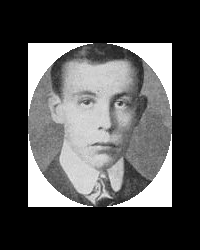
 |
Harold Bride is often described as shy, and quiet in public, but on the night of Titanic's clash with destiny, he surfaced as one of the great heroes of that night. Born January 11, 1890, he lived an introverted childhood. He developed a fascination with the wireless, and put himself through telegraphy school. Bride got his first employment in July 1911, and worked on the Haverford, Lusitania, La France, and the Anselm before going aboard Titanic, at age 22. |
"Then I found Marconi's telegraph
"Send SOS. It's the new call, and it may be your last chance to use it."
"Now we could hear the water washing over the boat deck and Mr. Phillips said, 'Come on, let's clear out...' "
"Wraithlike, he sat motionless at the key, only the blue spark dancing under his fingers indicating that he was still alive."
Selected sources: Encyclopedia Titanica, Titanic Heroes, Harold Bride: The Little Timex, Titanic: Triumph and Tragedy (Eaton/Haas), and Titanic: End
of a Dream (Wyn Craig Wade).
It could span the planet's width by half
Fifty yards, two thousand miles
The same..."
~~Bride; Titanic : A New Musical
When Bride came aboard the Titanic, he could
send approximately 26 words a minute. The wireless had a 400 mile daytime range,
which more than trebled at night. He and Philipps, the senior wireless operator, were technically employed by the Marconi Company, and were not part of the established
shipboard chain of command. This was partly responsible for the disorganization in
delivering ice warnings. There was no given procedure for delivering messages. The
wireless was seen by the crew as a convenience for the passengers, and not as
a safety feature. Sometimes ice warnings were given to the bridge, other times
directly to the captain.
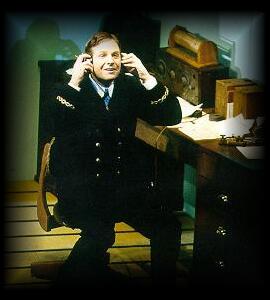
~~A joking Harold Bride to Phillipps, after they discovered Titanic was sinking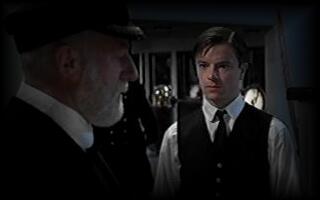
During the voyage, the wireless had a technical
problem which took the operators seven hours to fix. It didn't malfunction again,
but there was a huge backup of personal messages from the passengers. Since
the passengers were paying customers, they got priority over messages about
weather. Philips saw that Bride was tired, so he let him off his shift early and continued
sending out the messages. Bride woke up at about five minutes till 12 on Sunday
night, having slept through Titanic's impact with the iceberg. He offered to
relieve Philips of his shift two hours early. Just as they were about to switch, the
captain came in and asked them to send the distress call. Philips stayed on the
board while Bride prepared for them to abandon ship. After the captain announced
that it was "every man for himself", Bride left the room to collect their
money, while Philipps continued sending the signals out. When Bride he returned he
found someone trying to steal Phillips's lifebelt.
The three of them had a fight, and the two wireless operators ran out, leaving the
man unconscious on the floor.
~~Harold BrideBride climbed on top of the officers quarters. There, he and Phillips split company. Bride hleped push Collapsible B off onto the boat deck. He noticed Captain Smith dive off the bridge into the sea. The Collapsible
was put adrift upside down. Bride escaped in an air pocket underneath. He later
climbed on top in the last possible spot. Someone sat on his leg and crushed his
feet, but he didn't have the heart to ask them to move. When people around him were
ready to give up, he encouraged them by letting them know that the Carpathia was on its way, and should be there around 4 a.m.
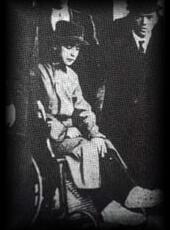
~~Wyn Craig Wade, Titanic: The End of a Dream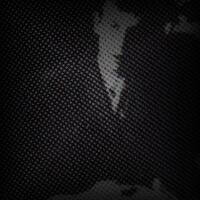
Although Bride was exhausted from the long night and his injured, frostbitten
feet, he assisted his friend Harold Cottam, the wireless operator of the Carpathia
transmit messages about the survivors. When Carpathia docked in New York,
Bride had to be carried off, nearly totally exhausted from constantly being on-duty.
He participated in the hearings, and then finally got to go home. He didn't like to
talk about the disaster after the hearings were over; the loss of his colleague Phillips
deeply troubled him. In 1913, he served on Medina. During World
War I, he served aboard Mona's Isle. Then he faded from view. He married
Lucy Downie, who had been following the Titanic story in the papers. She recognized him on the street one day, and it was love at first sight for both of them. Together they had three children.